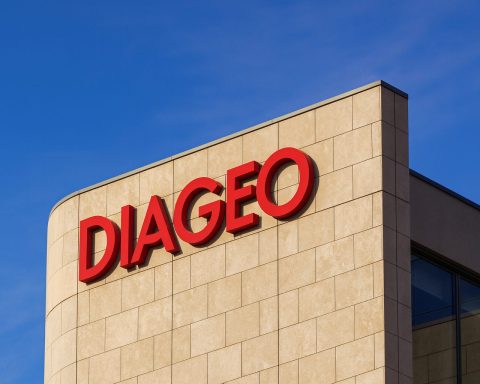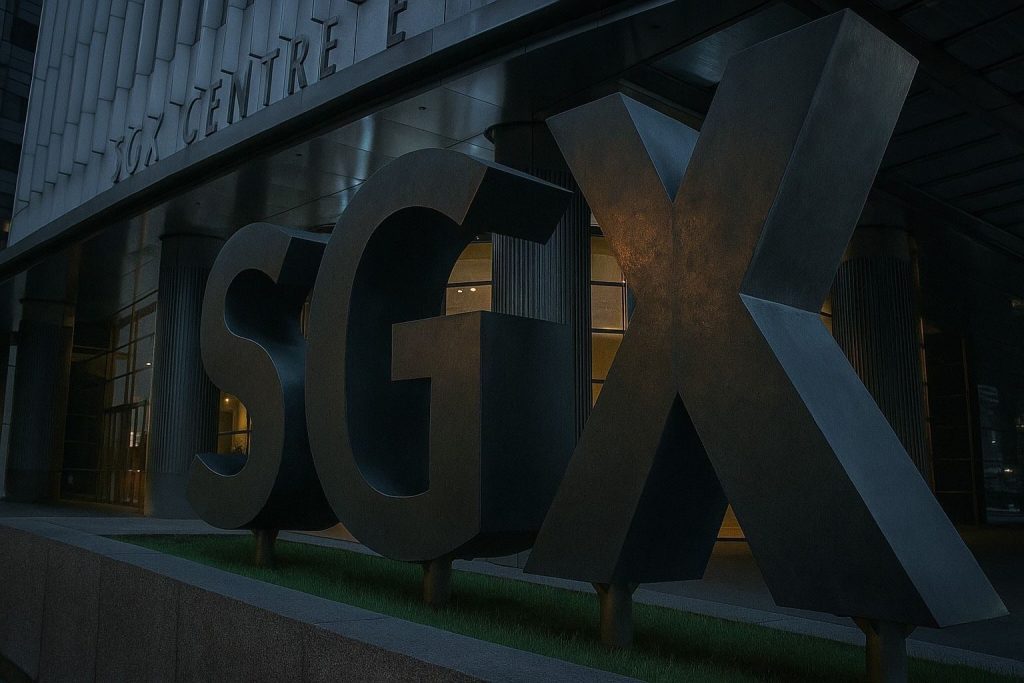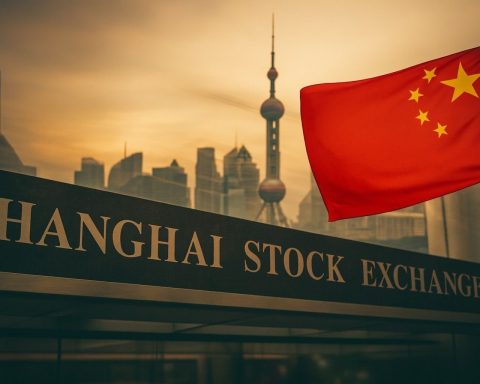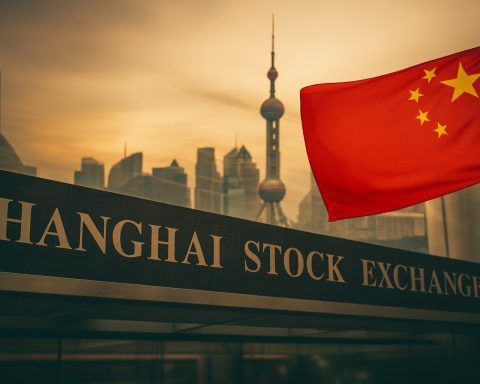China’s stock markets ended Wednesday mixed, as an aggressive rally in artificial-intelligence and tech shares ran head‑on into renewed panic over giant developer China Vanke’s plunging bonds. On the mainland, the benchmark Shanghai Composite Index edged down 0.15% to 3,864.18, even as the tech‑heavy Shenzhen Component Index jumped 1.02% to 12,907.83 and the ChiNext growth board surged 2.14% to 3,044.69. [1]
In Hong Kong, the Hang Seng Index notched a third straight gain, closing up 0.13% at 25,928.08, while the Hang Seng China Enterprises Index and Hang Seng Tech Index added 0.04% and 0.11%, respectively. [2] Support from Wall Street’s overnight rally and growing expectations of a U.S. Federal Reserve rate cut in December helped offset worries that Vanke’s bond rout is dragging China’s long‑running property crisis back into focus. [3]
Key market moves at a glance (Nov 26, 2025)
- Shanghai Composite (SHCOMP): 3,864.18, ‑0.15% [4]
- Shenzhen Component: 12,907.83, +1.02% [5]
- ChiNext Index: 3,044.69, +2.14% [6]
- CSI 300 (blue‑chip index):+0.6% [7]
- Hang Seng Index (HSI): 25,928.08, +0.13% [8]
- Hang Seng China Enterprises Index: 9,162.37, +0.04% [9]
- Hang Seng Tech Index: 5,618.36, +0.11% [10]
Turnover on Shanghai and Shenzhen reached 1.78 trillion yuan, slightly below the previous session’s 1.81 trillion yuan, underlining that while speculative interest remains solid, investors are selectively rotating into growth themes rather than buying the entire market. [11]
Mainland China: Headline index dips while growth board surges
Despite the modest decline in the Shanghai Composite, the underlying picture on the A‑share market was much more constructive for higher‑growth names. Official data show that Shenzhen’s main board and the ChiNext outperformed sharply, with small‑cap and “new economy” stocks leading gains. [12]
Sector-wise, computing‑power hardware and anti‑flu concept stocks were among the strongest performers, as investors continued to pile into themes tied to AI infrastructure and healthcare. In contrast, military‑equipment, forestry and gaming shares lagged, reflecting a rotation away from earlier defensive or speculative favorites. [13]
Beyond the broad indices, AI‑linked benchmarks staged an outsized rally: a Reuters summary noted that a CSI index tracking artificial intelligence names jumped around 3–4%, while cloud‑computing and chip‑focused gauges also climbed more than 2%. [14] That strength helped pull the CSI 300 into positive territory even as the older‑economy heavyweights on the Shanghai Composite weighed on the headline figure. [15]
At the same time, technicals on Shanghai remain fragile. Moneycontrol data show the index is still down about 3% over the past month, even after a strong year‑to‑date gain of roughly 18%, and its short‑term trend screen is flashing “very bearish” on moving averages. [16] That combination—solid long‑term gains, near‑term pullback—helps explain why domestic funds are focusing on stock‑picking rather than broad index buying.
Hong Kong: Hang Seng extends winning streak on Fed cut optimism
Across the border, Hong Kong stocks stretched their rebound, with the Hang Seng Index closing higher for a third consecutive session, up 0.1–0.13% depending on the source, as traders bet more confidently on a Fed rate cut at the December meeting. [17]
The tech‑heavy Hang Seng Tech Index also finished in positive territory, supported by Chinese internet names that rode the global recovery in growth stocks. [18]
Among individual movers:
- Meituan soared about 5.6% to HK$103.80, making it one of the day’s standout gainers as investors positioned ahead of its earnings release later this week. [19]
- Hong Kong property developers such as Hang Lung Properties and Wharf Real Estate Investment climbed roughly 1–2%, reflecting expectations that the city’s de facto central bank will mirror any Fed rate cut and ease pressure on mortgage costs. [20]
- Alibaba’s Hong Kong‑listed shares fell about 1.9%, even after the e‑commerce group reported stronger‑than‑expected revenue and vowed to keep investing “aggressively” in AI infrastructure. [21]
- Chow Tai Fook Jewellery slid more than 6% after its interim net income missed analysts’ estimates, highlighting continued consumer caution at the mid‑to‑high end. [22]
The macro backdrop remains supportive for risk assets in the region. U.S. data this week showed weak retail sales and softer consumer confidence, bolstering market pricing for a December Fed rate cut; Wall Street’s strong performance overnight filtered into Asia, with benchmarks across the region—from Japan’s Nikkei to Australia’s ASX 200—trading higher. [23]
Vanke bond plunge puts China’s property crisis back in the spotlight
The day’s most unsettling story was not on the equity tape, but in China’s credit markets. State‑backed giant China Vanke Co. saw a dramatic sell‑off in its onshore bonds, with several yuan‑denominated notes dropping more than 20% in early trade, forcing trading suspensions on five exchange‑listed issues, according to the Shenzhen Stock Exchange. [24]
One Vanke bond due in March 2027 was quoted around 60 yuan per 100 yuan face value by midday, down from about 80 at the open—nearly a 30% intraday collapse and not far above levels seen at the height of market panic late last year. [25] In parallel, Vanke’s Hong Kong‑listed shares fell around 5–6% to roughly HK$3.9–4.0, extending recent losses and underscoring investor doubts about the developer’s ability to navigate a heavy repayment schedule without stronger policy backing. [26]
Credit analysts quoted by Reuters described the situation in stark terms: markets are effectively oscillating between “no rescue” and “full central backing” scenarios, with rumor‑driven swings in bond prices making funding conditions increasingly volatile. [27]
The broader context is grim. Official figures show new home prices fell at their fastest monthly pace in a year in October, while persistent post‑pandemic deflationary pressure has weighed on household and business confidence. [28] Once the country’s largest developer by sales, Vanke has become a bellwether for whether Beijing is prepared to prevent even state‑linked builders from sliding toward default. Regional media noted that China’s property market is “bracing for a worsening crisis” as Vanke struggles to reassure investors. [29]
Unsurprisingly, this backdrop fed directly into the equity narrative. A Nasdaq summary of Asian markets pointed out that the Shanghai Composite’s 0.15% decline to 3,864.18 came as Vanke’s bond plunge reignited concerns about real‑estate risk, even though the CSI 300 and Hang Seng Index both ended higher on the day. [30]
PBoC holds the line: stocks and bonds decouple
Normally, a sharp equity wobble and fresh stress in the property sector might trigger a hunt for safety in Chinese government bonds. This time, that didn’t really happen.
According to an analysis in The Business Times, China’s 10‑year bond futures have been largely flat in November even as the Shanghai Composite has fallen about 2% for the month, marking a notable decoupling of stocks and bonds. [31] Investors, the report suggests, are reluctant to chase duration when they see limited room for further monetary easing and a policy pivot toward fiscal tools.
That perception is reinforced by the People’s Bank of China’s decision last week to keep its key loan prime rates unchanged for a sixth consecutive month. The one‑year LPR remains at 3.0%, and the five‑year rate—crucial for mortgage pricing—stays at 3.5%, in line with market expectations. [32]
In its recent monetary policy report, the PBoC revived “cross‑cyclical” language and signaled a preference for targeted support and fiscal measures over broad-based rate cuts, even as October data showed weaker credit growth and softening domestic demand. [33] For equity investors, that means less of a central‑bank safety net and a greater need to discriminate between winners and losers at the sector and company level.
AI and tech remain a powerful counterweight
If the property sector is the biggest drag on sentiment, AI and technology are still the strongest counterweights in China’s stock story.
In both onshore and offshore markets, AI‑linked indices and tech benchmarks outperformed on Wednesday. On the mainland, indices tracking artificial‑intelligence, cloud‑computing and chipmakers rose roughly 2–4%, far outpacing the flat‑to‑negative performance of the broader Shanghai Composite. [34]
In Hong Kong, tech majors helped keep the Hang Seng Tech Index in positive territory, with Meituan the standout after jumping more than 5%. [35] Even Alibaba, despite a nearly 2% pullback in its Hong Kong shares and a sharper drop in its U.S. listing after weaker quarterly profits, drew attention for its pledge to invest more heavily in AI infrastructure—signaling that China’s platform giants are now racing to build long‑term AI capacity rather than focusing solely on near‑term margins. [36]
Global asset managers are leaning into that narrative. Strategists at UBS Asset Management, cited by Reuters, argued that Chinese equities remain “attractively valued”, and that the next leg of performance will be driven more by earnings fundamentals than by multiple expansion. They also highlighted structural improvements in corporate governance, a more predictable business environment for private firms, and somewhat reduced U.S.–China tensions compared with previous years. [37]
The Shanghai Stock Exchange’s 2025 Global Investors Conference, which kicked off earlier this month, has been reinforcing that message to overseas funds—stressing themes like technology, green development and consumption upgrades as the core engines of future returns. [38]
What today’s moves mean for investors
For investors following the China stock market today, Nov 26, 2025 underscores a familiar but sharpened split:
- Bullish forces
- AI, cloud, semiconductors and computing‑power infrastructure continue to attract capital and deliver strong index‑level gains.
- Valuations across Chinese equities remain discounted relative to U.S. peers, while year‑to‑date returns on the Shanghai Composite are still strongly positive despite the recent pullback. [39]
- Policymakers are signaling a willingness to support growth via targeted measures and fiscal tools, even if headline rates stay on hold. [40]
- Bearish forces
- The property sector remains the core macro risk, with Vanke’s latest bond slump showing that even state‑backed names are not immune to confidence shocks. [41]
- Persistent deflationary pressure and weak housing demand constrain household spending and corporate pricing power. [42]
- The PBoC’s reluctance to ease aggressively limits the prospect of a quick, liquidity‑driven rebound if sentiment sours again. [43]
Key events to watch next
Over the coming days and weeks, market participants are likely to focus on:
- Meituan earnings – Results due later this week could test how much of the recent rally in Hong Kong tech is already priced in. [44]
- U.S. Fed December meeting – A confirmed rate cut would likely support risk assets globally and ease pressure on Asian currencies, including the yuan and Hong Kong dollar. [45]
- Any fresh signals on property support – Comments or actions from Beijing and local governments regarding Vanke and other major developers will be scrutinized for signs of a backstop or, conversely, willingness to tolerate more restructuring pain. [46]
- Upcoming Chinese data releases – November credit, housing and inflation figures will show whether deflation and weak demand are deepening or stabilizing. [47]
For now, China’s stock market on November 26, 2025 is sending a clear message: new‑economy growth and AI optimism are driving pockets of strength, but the unresolved property downturn and a cautious central bank continue to cap index‑level upside.
This article is for informational purposes only and does not constitute investment advice. Always conduct your own research or consult a licensed financial advisor before making investment decisions.
References
1. www.chinadailyhk.com, 2. english.news.cn, 3. www.ksat.com, 4. www.chinadailyhk.com, 5. www.chinadailyhk.com, 6. www.chinadailyhk.com, 7. www.tradingview.com, 8. english.news.cn, 9. english.news.cn, 10. english.news.cn, 11. www.chinadailyhk.com, 12. www.chinadailyhk.com, 13. www.chinadailyhk.com, 14. www.tradingview.com, 15. www.tradingview.com, 16. www.moneycontrol.com, 17. www.scmp.com, 18. english.news.cn, 19. www.scmp.com, 20. www.scmp.com, 21. www.scmp.com, 22. www.scmp.com, 23. www.ksat.com, 24. www.reuters.com, 25. www.reuters.com, 26. www.investing.com, 27. www.reuters.com, 28. www.reuters.com, 29. www.straitstimes.com, 30. www.nasdaq.com, 31. www.businesstimes.com.sg, 32. www.reuters.com, 33. www.businesstimes.com.sg, 34. www.tradingview.com, 35. www.scmp.com, 36. www.ksat.com, 37. www.tradingview.com, 38. english.sse.com.cn, 39. www.moneycontrol.com, 40. www.reuters.com, 41. www.reuters.com, 42. www.reuters.com, 43. www.businesstimes.com.sg, 44. www.scmp.com, 45. www.ksat.com, 46. www.reuters.com, 47. www.businesstimes.com.sg










